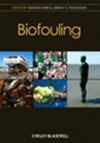野外采集的莼菜和实验室培养的莼菜生物污染潜力比较。
IF 2.6
3区 生物学
Q3 BIOTECHNOLOGY & APPLIED MICROBIOLOGY
引用次数: 0
摘要
海洋藻类石灰莼通常被用作生物污损模式生物。由于生物污损研究主要使用野外采集的标本,包括物种特征、季节性可用性和生理状态等因素都会妨碍研究结果的可复制性。为了解决这些限制因素,我们制定了一套按需实验室培养和释放莼菜动物孢子的方案。使用水刀比较了实验室培养的莼菜叶片和野外采集的莼菜叶片的生物污损潜力。在孢子附着力(水喷射前)或水喷射后孢子保留比例方面,野外和实验室培养的样本之间没有发现明显差异。不过,在每种试验类型中,水刀暴露前和暴露后的差异都很大,这表明孢子粘附和保留水平在不同的试验中差异很大。此外,我们所有的实验室培养物都是 C 支系莼菜(LPP 复合体)。这种按需生产莼菜孢子的方案可以改进生物污损研究方法,对不同实验室和地区的结果进行比较,并加快防生物污损策略的开发。本文章由计算机程序翻译,如有差异,请以英文原文为准。
A comparison of the biofouling potential of field-collected and laboratory-cultured Ulva.
The marine algae Ulva spp. are commonly used as model biofouling organisms. As biofouling studies are primarily conducted using field-collected specimens, factors including species identity, seasonal availability, and physiological status can hinder the replicability of the results. To address these limitations, a protocol was developed for the on-demand laboratory culture and release of Ulva zoospores. The biofouling potential of laboratory-cultured and field-collected Ulva blades was compared using a waterjet. No significant differences were found between field and laboratory-cultured samples in either spore adhesion (before waterjet) or the proportion of spores retained after waterjet exposure. However, there was significant variability within each session type in pre- and post-waterjet exposures, indicating that spore adhesion and retention levels vary significantly among trial runs. In addition, all our laboratory cultures were Ulva Clade C (LPP complex). In contrast, our field samples contained a mix of Ulva Clade C, U. compressa clade I, and U. flexuosa Clade D. This protocol for on-demand production of Ulva spores can improve biofouling research approaches, enables comparison of results across laboratories and regions, and accelerate the development of anti-biofouling strategies.
求助全文
通过发布文献求助,成功后即可免费获取论文全文。
去求助
来源期刊

Biofouling
生物-海洋与淡水生物学
CiteScore
5.00
自引率
7.40%
发文量
57
审稿时长
1.7 months
期刊介绍:
Biofouling is an international, peer-reviewed, multi-discliplinary journal which publishes original articles and mini-reviews and provides a forum for publication of pure and applied work on protein, microbial, fungal, plant and animal fouling and its control, as well as studies of all kinds on biofilms and bioadhesion.
Papers may be based on studies relating to characterisation, attachment, growth and control on any natural (living) or man-made surface in the freshwater, marine or aerial environments, including fouling, biofilms and bioadhesion in the medical, dental, and industrial context.
Specific areas of interest include antifouling technologies and coatings including transmission of invasive species, antimicrobial agents, biological interfaces, biomaterials, microbiologically influenced corrosion, membrane biofouling, food industry biofilms, biofilm based diseases and indwelling biomedical devices as substrata for fouling and biofilm growth, including papers based on clinically-relevant work using models that mimic the realistic environment in which they are intended to be used.
 求助内容:
求助内容: 应助结果提醒方式:
应助结果提醒方式:


